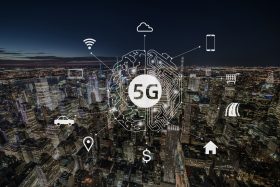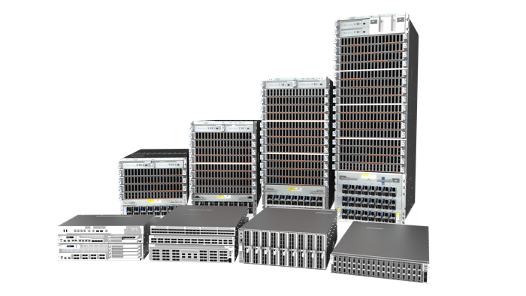Living the Monetization and Efficiency Dream at MWC

BARCELONA -- In business, there are buzzwords for a reason. They are often used because they sound more polite or smarter than the thing they are actually describing. Such is the case with “monetization,” which refers to the process of making money. Monetization was the buzzword that was everywhere here at Mobile World Congress (MWC).
As we have outlined in detail, the global service provider industry is in the middle of an existential crisis about how to make money from, or monetize, their $1 trillion+ investment in 5G infrastructure.
As we saw throughout the week, there was a focus on compelling and interesting new services using 5G. Some of the standout use cases and services include immersive experiences, smart manufacturing, and smart retail. But an equally strong theme is the adoption of cloud-native technologies to help drive down costs and deliver time to speed up these new services. Let's dive into the central themes.
The Industry Laments Itself
In a refreshing change, the industry expressed great self-awareness about the issues. I picked up Tuesday’s Mobile World Daily, the show publication produced by the GSMA, the operator of the event. Here are the first few headlines I read on Tuesday:
- Orange CEO hits out at contradictory European landscape
- Deutsche Telekom boss laments decline of Europe
- Telefonica boss insists there is no future without telcos
- EU’s Breton keeping open mind on ‘fair share’ debate
Wow! Didn’t realize the editor of the Mobile World Daily was Debbie Downer. These news stories about many of the European telecom executives were a bit grim, depicting the industry as some kind of economic dystopia that needs to be saved by government.
In case you haven’t followed the grand narrative of the afflicted European telcos, the money-printing cloud and content companies are gobbling up all their bandwidth for free and spitting out dollar bills with it. So the carriers want more regulation or some kind of "content tax" to pay for their infrastructure.
To a degree, they have a point. But their cries for more regulation risk plunging them into a cycle of denial that tops innovation.
The COO of Netflix hit back on the "fair share" debate on Tuesday -- pointing out that Netflix spends billions on content that helps sell telco services and that many of the telcos have larger margins than Netflix.
The Search for New Apps
In the meantime, service providers will have to step up the development of new premium services to pay their bills -- but they're also going to have to move to more efficient platforms and services, including cloud-native telco platforms that can reduce both capital expense (capex) and operating expense (opex).
The new services are the same ones the industry has been talking about for years – premium gaming, low-latency edge services, smart manufacturing, smart retail, and augmented reality/virtual reality (but probably not see-through 5G cars). In fact, you can see all of these services leading the charge in our Cloud Tracker database of use cases named in more than 100 global 5G services.
Some of these services were on display at MWC. At a technology panel hosted by the Wall Street Journal, Massimo Peselli, Chief Revenue Officer, Global Enterprise & Public Sector with Verizon Business, pointed to Verizon’s big success in AR/VR and immersive experiences with the National Basketball Association (NBA) and the National Football League in the United States. Some of these services included cashless commerce as well as immersive video, including the placement of 150 cameras and sensors on an NBA court to benefit both athletes and fans. This technology will soon be implemented in the English Premier League.
Hopefully Verizon is making good money on this business. Immersive reality can be a value-added business and brings an interesting experience to the consumer.
In the Ciena booth, I learned how edge compute and networking is helping to drive smart manufacturing, which according to our Cloud Tracker Pro database is one of the hottest use cases. Another application is “smart junctions,” or traffic systems that can communicate with vehicles to provide additional safety and navigation data (such as: The light is red, don’t go.)
Of course, many of these use cases and services are not new ideas in the industry. We are, however, seeing real traction in smart manufacturing, healthcare, broadband, and smart retail. So maybe the service providers should stop the whining about 5G monetization and get to work.
As Simon Leopold, an analyst with Raymond James, pointed out in a detailed investment note, the industry has work to do to draw more investor interest:
“Participation by the investment community remained weak, however, with fewer buy-side and sell-side analysts than in prior years. Considering the less inspiring growth from 5G, the reduced interest does not surprise us; however, the event provides a great opportunity for meeting many industry participants. Additional tailwinds include Huawei displacements, unprecedented price inflation, and normalization of the supply chain.”
Some of the additional themes highlighted by Leopold (quoting from his note):
- Geographic shifts dominate the 5G market. Dell’Oro’s forecast predicts 1% global RAN growth in 2023, which includes a 7% decline from N. America and 4% from China, offset by 12% growth from Asia ex-China. China plus North America account for 56% of spending, down from 59% in 2022, while ex-China Asia is just 23% up from 20% in 2022. The maturity of 5G in the U.S. and China drive the declines, while the ramp in India fuels an offset, but with margin pressure.
- We heard several themes throughout our meetings. Power efficiency repeatedly came up in discussions, and we wrote on this topic last month in our piece, “Seizing Power — Reducing Energy Intensity and CO2/GHG Emissions Helps the Bottom Line.” Within the context of mobility, the vendors highlighted more power efficient radios. We hear investor concerns that European operators will spend less because of their higher electricity costs, and the vendors assert that power consumption has become elevated in discussions and influence upgrades. Although there is little debate regarding the concept of an improving supply chain, the vendors differ regarding experiences through 2022 as well as expectations for the rate of recovery. The OEMs expect to begin to work down their own inventory, which can help with cash flow, and acknowledge that in many cases their customers are doing the same.
- Investor have not asked about Open RAN (O-RAN) for some time, but the potentially disruptive shift in RAN networks has reemerged around Mobile World Congress. The topic fed investor debate in the past, and we published a primer on O-RAN in 2020. A new report from Deutsche Telekom, Orange, TIM, Telefónica, and Vodafone promotes progress highlighting maturity, security, and energy efficiency of new Open RAN. Incumbent suppliers (e.g. Ericsson and Nokia) proclaim support for O-Ran, a set of interface standardizations intended to commoditize radio networks.
- The prospect for Huawei swaps remains an opportunity for western suppliers. Huawei’s recent sales of mobile infrastructure outside of China exceeded $5B, or 17% of the market based on data from Dell’Oro. Vendors indicated that Huawei continues to ship product into western operators.
Focus on Optimization and Efficiency
To Leopold's point, operational efficiency and cost containment were certainly strong themes at MWC, along with sustainability. In addition to growing revenue with new services, the industry will deploy a more efficient infrastructure -- which is of course the whole point of technology.
One area to watch is the slow but sure move to cloud-native operating platforms and commercial-off-the-shelf (COTS) hardware, which should bring automation gains, including lower capex and opex.
This was also a strong theme at a service provider panel hosted by Israeli cloud networking company DriveNets, a member of our Futuriom 50.
Igal Elbaz, Senior VP of Network at AT&T, told the audience that saving on costs was crucial as AT&T has seen its network traffic growing at 30% a year. This is the driver behind AT&T's adoption of DriveNets' cloud-based networking platform that can lower both capex and opex costs running cloud-native networking across COTS white boxes, which can scale out as the infrastructure inside hyperscale datacenters grows. AT&T and DriveNets said that DriveNets' platform is now running more than 50% of the traffic on AT&T's core network.
"Our profitability is at stake so we need to reduce our total cost of ownership [TCO]," said Elbaz.
Jean Louis Le Roux, Interim Executive VP, International Networks for Orange, reiterated this theme. In addition to improving TCO, Le Roux pointed out that European telcos must also reduce their carbon footprints and save energy.
"We are wasting tremendous amounts of energy in our networks today. With elastic scaling, we can operate more efficiently," Le Roux said.
Cloud-native technologies appear to be getting more mainstream in operator networks. In another booth here, Red Hat’s Chief Technical Officer, Ian Hood, told me that Red Hat is seeing wide adoption of Kubernetes and development platforms by the telcos and suppliers alike, a trend he expects to continue for some time.
“The growth for us is in cloud native with OpenShift,” said Hood. “There is strength in applications development and deployment, whether that’s Lockheed Martin managing planes and drones or a bank managing [finances].” Hood said OpenRAN still requires more development that will take some time, but that Red Hat is fully behind it.
The bottom line for now seems to be that the communications industry is still working through its 5G monetization issues. In the near term, improving operational efficiency by moving to cloud native may be a more practical goal.
















